10 Things to Do in Kyoto for an Unmissable Adventures in Japan’s Cultural Capital
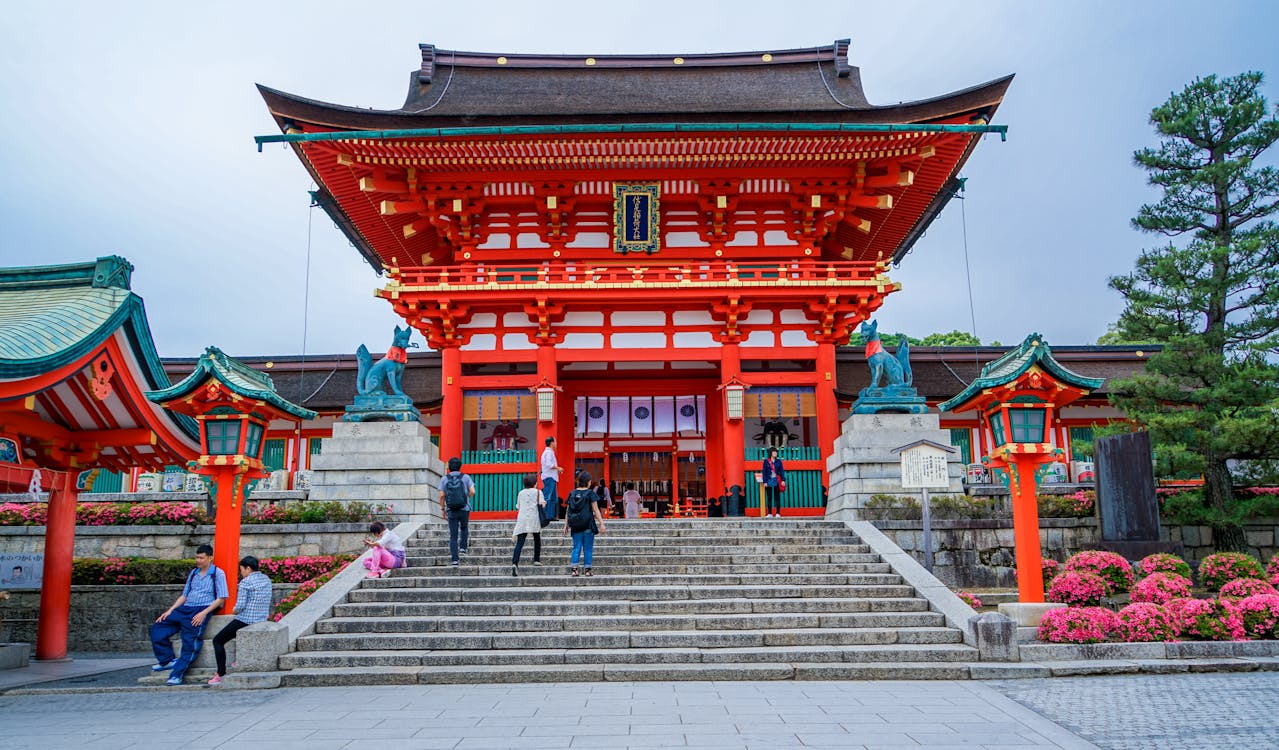
Kyoto, the cultural heart of Japan, is a city where ancient traditions blend seamlessly with modern charm. From stunning temples and serene gardens to bustling markets and hidden gems, Kyoto offers an unforgettable adventure for every traveler. Whether you’re a history buff, a foodie, or a nature lover, this guide will take you through the top things to do in Kyoto for an experience you won’t forget!
1. Fushimi Inari Taisha
Fushimi Inari Taisha is one of Kyoto’s most iconic landmarks, famous for its seemingly endless path of vibrant red torii gates. This shrine, dedicated to Inari, the Shinto god of rice and agriculture, offers visitors a unique mix of cultural history and natural beauty.
Highlights of Fushimi Inari Taisha
- Torii Gates: The standout feature of the shrine is its thousands of torii gates, each donated by individuals or businesses as a gesture of gratitude and hope for future success. Walking through these gates feels like stepping into a mystical world.
- The Hike: The trail snakes up Mount Inari, passing smaller shrines and fox statues along the way. The hike to the summit takes about 2-3 hours, but you can turn back at any point if you prefer a shorter walk.
- Fox Statues: Foxes, considered messengers of Inari, are seen throughout the shrine complex. They add an intriguing touch to the already magical atmosphere.
Tips for Visiting
- Visit Early or Late: To avoid crowds, try visiting around 6 a.m. or after 8 p.m. The shrine is open 24 hours, and the experience at night, with soft lighting and a quieter vibe, is unforgettable.
- Wear Comfortable Shoes: The hike can be steep in parts, so good walking shoes are a must.
- Enjoy Local Snacks: Don’t miss the food stalls near the entrance offering treats like grilled mochi and inari sushi.
Walking through the torii gates, surrounded by forested hills, feels like a journey into another realm. It’s peaceful, mysterious, and a little enchanting—a must-see for anyone visiting Kyoto.
For those traveling by train, Fushimi Inari Taisha is conveniently accessible from Japan’s bullet trains, making it an easy addition to your Kyoto itinerary.
2. Kiyomizu-dera Temple
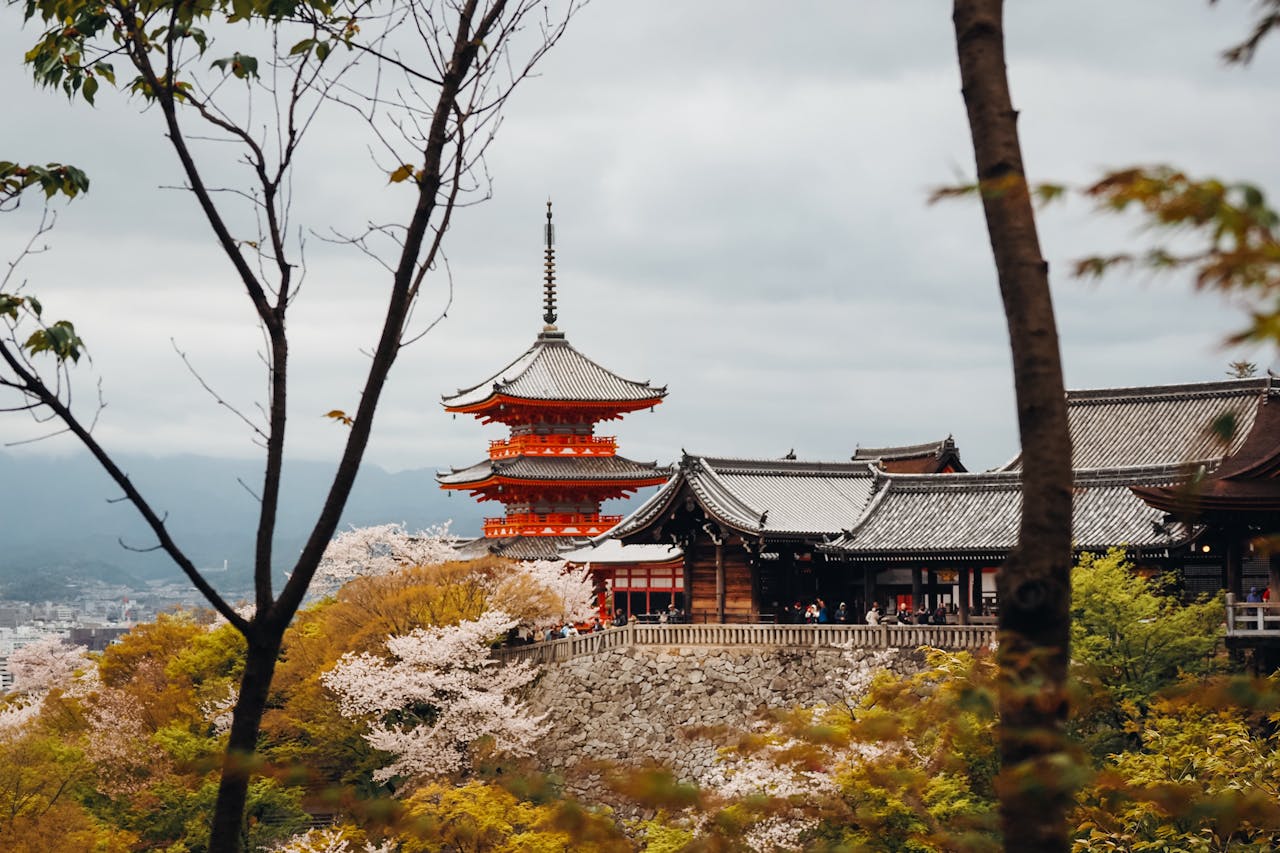
Kiyomizu-dera, or the “Pure Water Temple,” is a must-see for anyone visiting Kyoto. This iconic temple, perched on a hillside in Southern Higashiyama, offers breathtaking views of the city from its famous wooden stage. Built entirely without nails, the main hall is an architectural wonder and houses a statue of the eleven-faced, thousand-armed Kannon, the goddess of mercy.
Highlights of Kiyomizu-dera
- The Wooden Stage: A large balcony extending from the main hall, providing panoramic views of Kyoto. It’s especially stunning in autumn when the surrounding maple trees burst into shades of red and orange.
- Tainai-meguri: A unique experience where visitors enter complete darkness to make a wish—a bit eerie but unforgettable.
- Three-Story Pagoda: A striking red pagoda that’s perfect for photos and adds to the temple’s charm.
Practical Tips for Your Visit
- Getting There: Take the Keihan Railway Line to Kiyomizu-Gojo Station, followed by a 20-minute walk. Alternatively, buses 100 or 206 stop at Gojo-zaka or Kiyomizu-michi, just a 10-minute walk away.
- Arrive early to avoid crowds, as this UNESCO World Heritage Site is one of Kyoto’s most popular attractions.
- Wear comfortable shoes—the walk up to the temple is steep, and the grounds are expansive.
Visiting Kiyomizu-dera feels like stepping into a different time. The blend of history, nature, and spirituality creates an atmosphere that’s both peaceful and awe-inspiring.
For those exploring Japan on a budget, consider adding Kiyomizu-dera to your 7-day itinerary for Kyoto, Tokyo, and Osaka. It’s a fantastic way to experience Kyoto’s rich culture without overspending.
3. Arashiyama Bamboo Grove
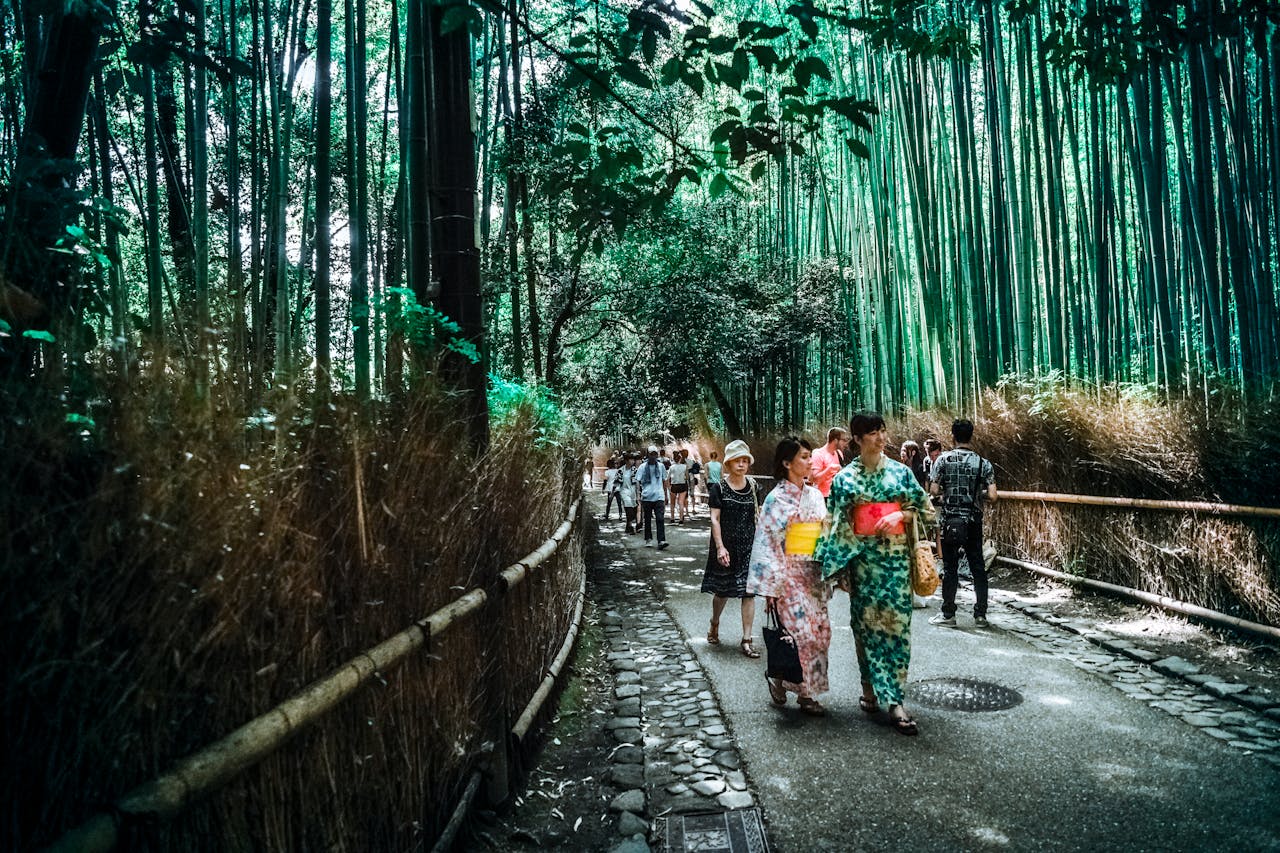
Walking through the Arashiyama Bamboo Grove is like stepping into another world. The towering bamboo stalks stretch endlessly toward the sky, creating a canopy of green that feels both calming and otherworldly. It’s one of those places that looks like it belongs in a dream.
Tips for Visiting
- Timing is key: Arrive early in the morning or late in the afternoon to avoid the large crowds. The soft light during these times also makes for stunning photographs.
- Bring your camera: The lush green bamboo makes for an incredible backdrop.
- Consider a bike or rickshaw: Renting a bicycle or taking a traditional rickshaw ride lets you enjoy the grove at a leisurely pace.
Nearby Attractions
While the bamboo grove is the highlight, the Arashiyama area has plenty more to explore:
- Tenryu-ji Temple: A UNESCO World Heritage site with gorgeous gardens.
- Togetsukyo Bridge: Offers breathtaking views, especially during cherry blossom season.
- Okochi-Sanso Villa: A peaceful retreat with stunning gardens and city views.
Pro Tip: The bamboo grove is relatively short, about 500 meters, but you’ll want to take your time soaking in the atmosphere. Early mornings are the best for a quieter, more serene experience.
If you’re traveling internationally and looking for ways to stay connected, consider getting an eSIM in Kyoto. It’s a hassle-free way to access affordable data plans without juggling physical SIM cards, making your visit to Kyoto even smoother.
4. Kinkaku-ji
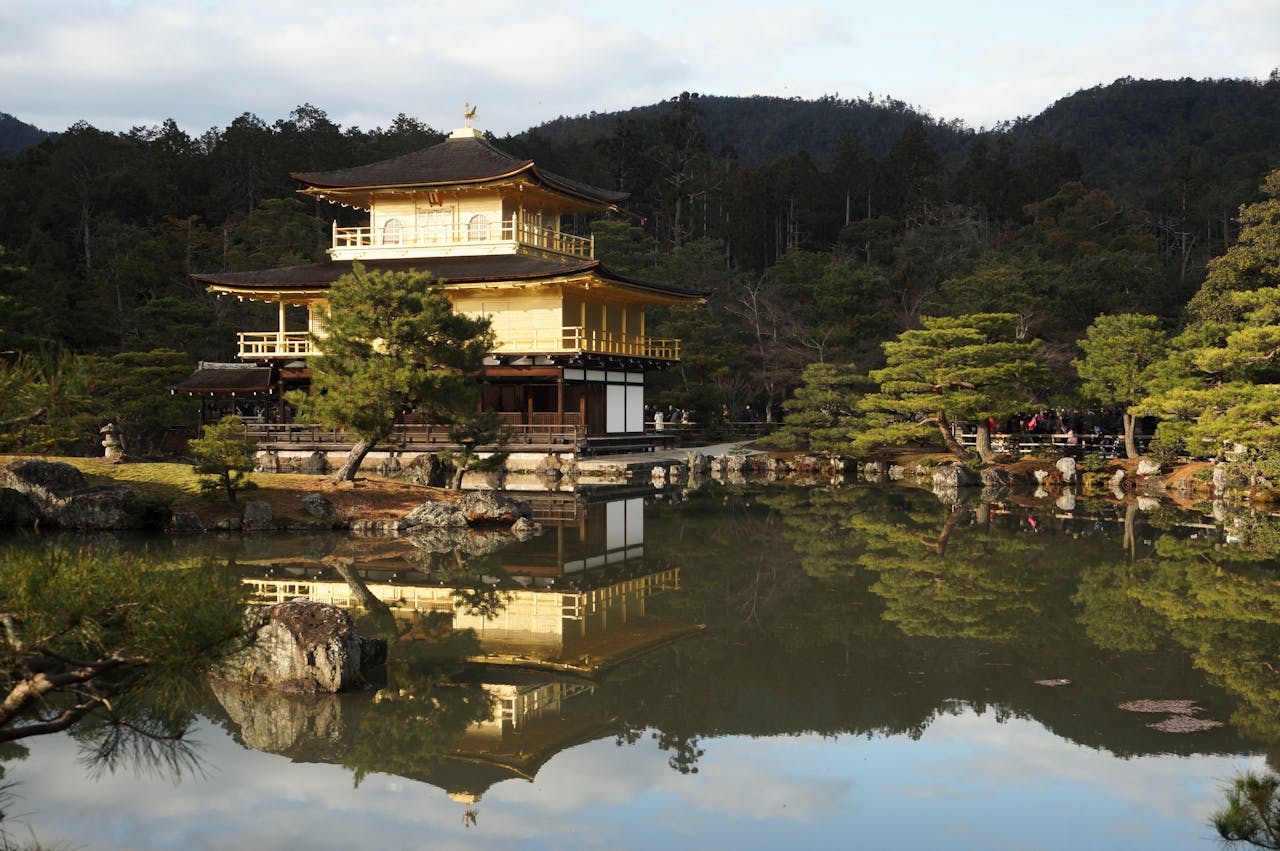
Kinkaku-ji, also known as the Golden Pavilion, is one of Kyoto’s most iconic landmarks. This shimmering temple, covered in gold leaf, reflects beautifully in the still waters of Kyoko-chi Pond, creating a picture-perfect scene that draws visitors from around the world.
What Makes Kinkaku-ji Special?
- The top two levels of the temple are entirely coated in gold leaf, making it a dazzling sight on sunny days.
- The surrounding gardens are meticulously designed, featuring pruned trees, stone lanterns, and a tranquil walking path that offers various perspectives of the pavilion.
- A charming tea house sits within the grounds, where you can enjoy a traditional cup of matcha while soaking in the serene environment.
Quick Tips for Your Visit
- Arrive early to avoid the midday crowds, especially if you’re hoping to take photos from the popular viewpoint across the pond.
- The temple is located in northern Kyoto. The nearest metro stop is Kita-Oji, but many visitors find taking a taxi more convenient.
- Be prepared for the pavilion to be busy—it’s a favorite among tourists and photographers alike.
Visiting Kinkaku-ji feels like stepping into a postcard. The golden glow of the temple mirrored on the water, is a sight that stays with you long after you leave.
5. Nishiki Market
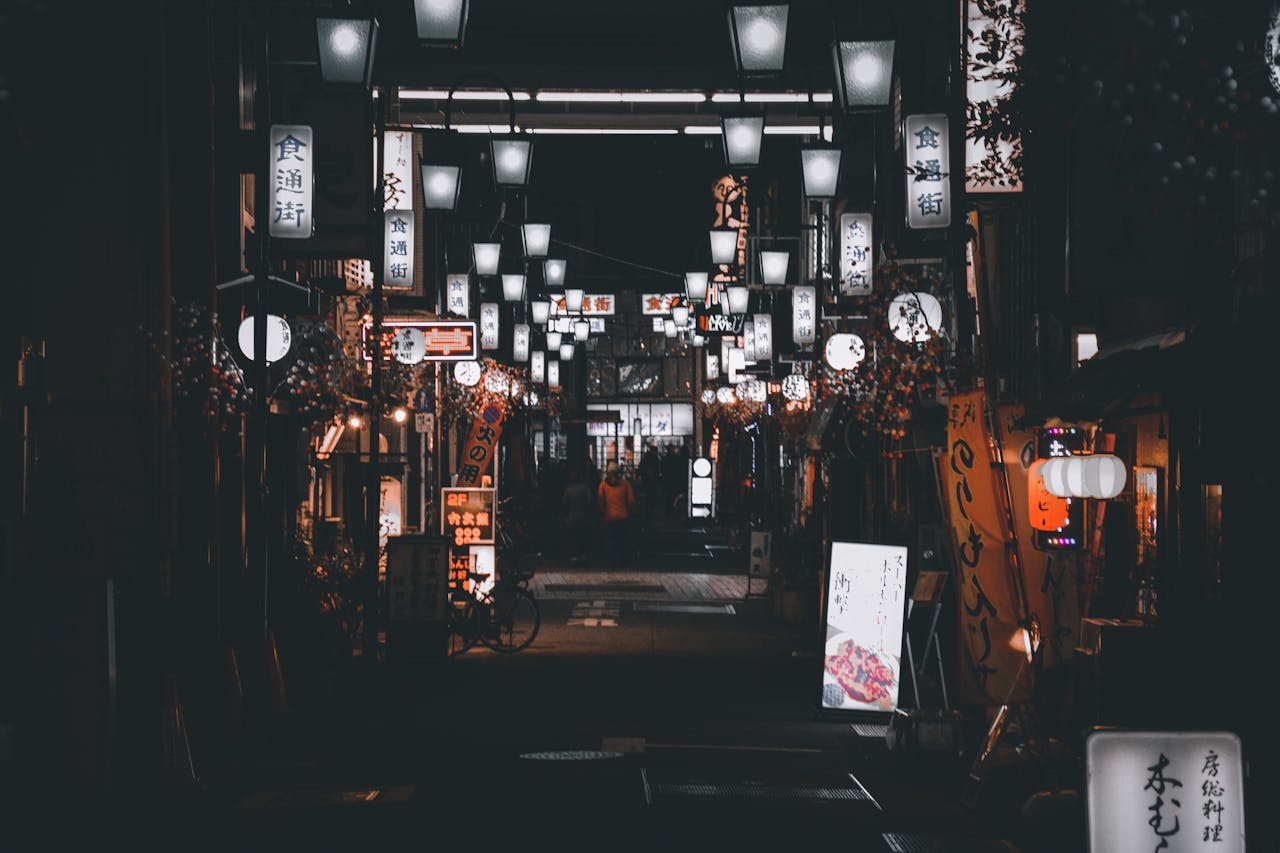
Known as “Kyoto’s Kitchen,” Nishiki Market is a bustling hub for food lovers and curious travelers. This narrow, five-block-long shopping street is packed with over a hundred shops and stalls offering a wide variety of fresh produce, seafood, and Kyoto specialties. It’s a feast for the senses, blending vibrant colors, tantalizing aromas, and the chatter of vendors.
What to Expect
- Local Delicacies: From matcha-flavored sweets to yudofu (tofu hot pot), the market showcases Kyoto’s culinary heritage.
- Free Samples: Many vendors offer small bites for you to taste before buying.
- Unique Finds: Discover pickled vegetables, miso-smothered eggplants, and chili-coated rice cakes.
Tips for Visiting
- Arrive early to avoid the crowds and enjoy a more relaxed experience.
- Be adventurous and try “mystery foods”—even if you can’t read the signs, the surprise is part of the fun.
- Keep cash handy, as not all vendors accept credit cards.
Getting There
- Closest Metro Stop: Shijo Station (Karasuma Subway Line) or Karasuma/Kawaramachi Stations (Hankyu Line).
- Best Time to Visit: Between 10 AM and 5 PM, as most stalls operate during these hours.
Share Your Journey in Kyoto, With the World
Stay online in Kyoto with instant activation.
Pro Tip: If the market feels too crowded, consider exploring the basement food halls in nearby department stores like Takashimaya or Daimaru. They offer a similar variety of foods in a calmer setting.
6. Gion District

Gion is Kyoto’s most iconic geisha district, offering visitors a glimpse into Japan’s rich cultural history. Nestled in the Higashiyama District, it’s a place where tradition and modernity coexist beautifully. The narrow streets are lined with traditional wooden machiya houses, many of which now serve as teahouses, restaurants, and boutiques. Walking through Gion feels like stepping back in time.
Highlights of Gion
- Hanamikoji Street: This picturesque street is the heart of Gion. In the evenings, the lantern-lit pathways create a magical atmosphere. Keep an eye out for geishas and maikos (apprentice geishas) heading to their appointments.
- Yasaka Shrine: Located at the eastern edge of Gion, this Shinto shrine is a serene spot to visit during your exploration.
- Geisha Culture: If you’re lucky, you might spot a geisha or maiko in their vibrant kimono and elaborate hairstyles. Remember, photography on private streets is prohibited—be respectful of their privacy.
Tips for Visiting
- Best time to visit is during the evening when the streets are illuminated with traditional lanterns.
- Wear comfortable shoes as you’ll be walking on cobblestone streets.
- Try a traditional tea ceremony at one of the local teahouses for a deeper cultural experience.
The charm of Gion lies in its ability to transport you to another era while still being part of the bustling city of Kyoto. It’s a must-visit for anyone wanting to experience the elegance of old Japan.
For more seasonal activities, Japan offers something magical all year round. In spring, cherry blossoms create a dreamy landscape, while autumn brings vibrant foliage perfect for photography. Explore Japan’s seasonal wonders and make your trip unforgettable!
7. Philosopher’s Path
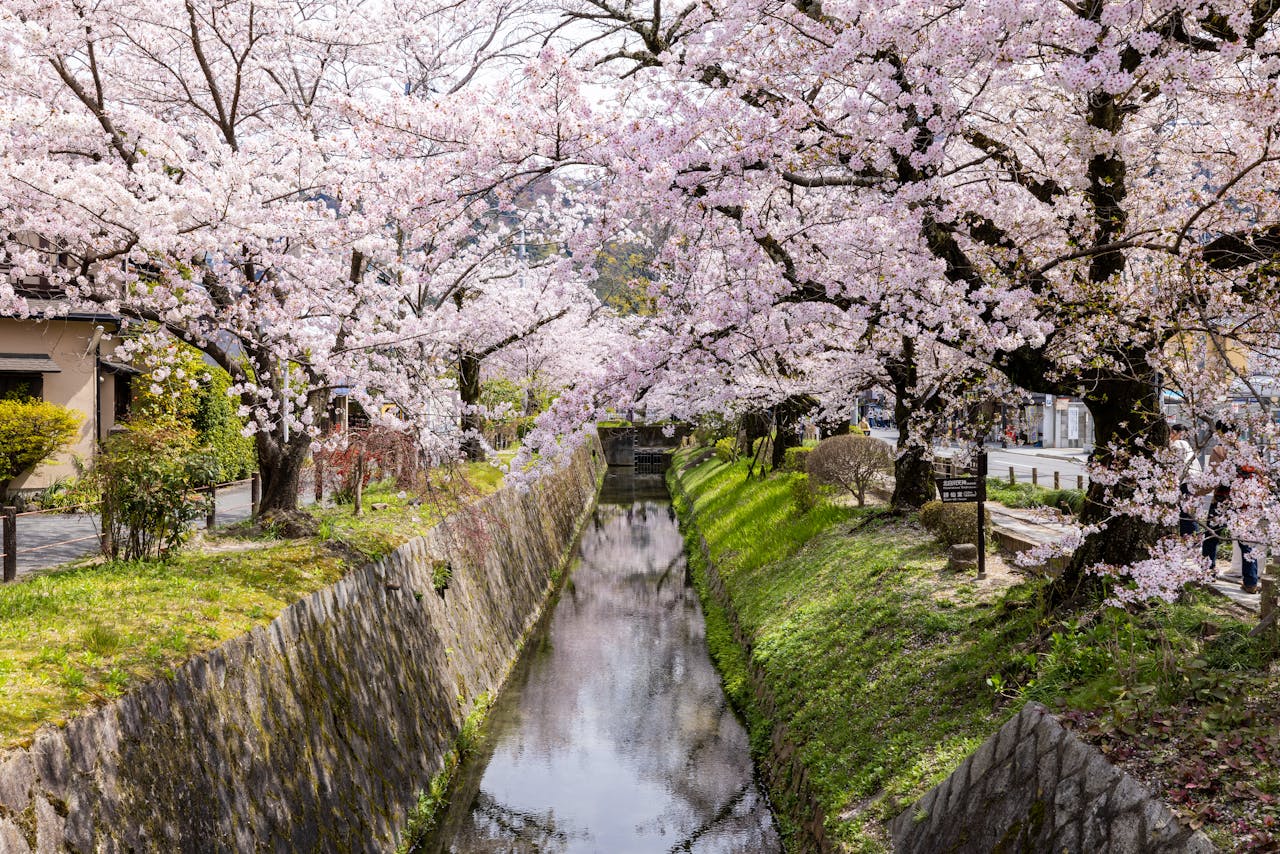
The Philosopher’s Path is one of Kyoto’s most peaceful and scenic walks. Stretching about 2 kilometers (roughly 1.2 miles) along a gentle canal, this stone-paved path connects the iconic Ginkaku-ji Temple (Silver Pavilion) to the Nanzen-ji Temple. It’s a favorite spot for both tourists and locals, especially during cherry blossom season when the trees lining the canal burst into delicate pink hues.
Highlights of the Path
- Cherry Blossom Season: If you’re visiting in spring, this is the perfect place to soak in Kyoto’s famed cherry blossoms. The path transforms into a dreamy corridor of pink petals.
- Quiet Temples Along the Way: Stop by smaller temples like Honen-in for a moment of reflection or to escape the crowds.
- Seasonal Beauty: While spring is the most popular time, the Philosopher’s Path also shines in autumn with vibrant foliage and in summer with lush greenery.
Tips for Your Walk
- Timing: Early morning or late afternoon is ideal to avoid the midday crowds.
- Comfortable Shoes: The path is easy to walk, but good shoes will make it even more enjoyable.
- Nearby Attractions: Don’t miss Ginkaku-ji at one end and Nanzen-ji at the other. Both are worth exploring for their Zen gardens and historic architecture.
Walking the Philosopher’s Path feels like stepping into a serene painting. It’s a reminder to slow down and enjoy the beauty around you.
For couples looking for a romantic escape, Kyoto’s tranquil spots like the Philosopher’s Path make it a top destination to celebrate love. Explore more romantic places to visit on Valentine’s Day.
8. Nijo Castle
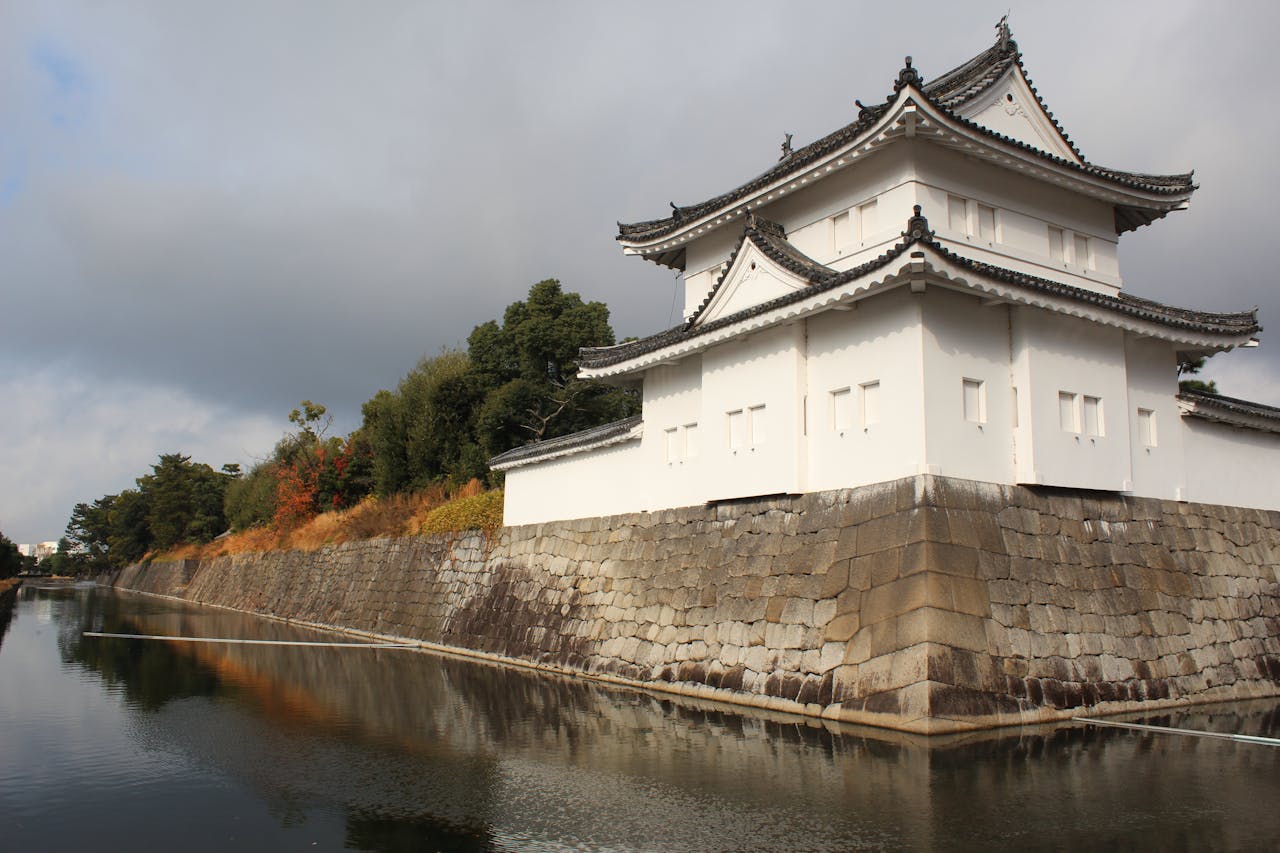
Nijo Castle is a historic gem right in the heart of Kyoto. Built in 1603, this UNESCO World Heritage Site served as the residence of Tokugawa Ieyasu, the first shogun of the Tokugawa Shogunate. Walking through its grounds feels like stepping back in time, with its imposing stone walls, wide moat, and traditional Japanese architecture.
Highlights of Nijo Castle
- Ninomaru Palace: The centerpiece of the castle, this palace is famous for its beautifully painted sliding doors and tatami mat rooms. Don’t miss the “nightingale floors,” which were designed to chirp when walked upon, acting as a security measure against intruders.
- Gardens: The castle grounds feature meticulously maintained gardens, showcasing seasonal beauty with cherry blossoms in spring and vibrant foliage in autumn.
- History: Learn about the role of the castle during the Edo period and its transition to a public site in 1867, marking the end of shogunate rule.
Tips for Visiting
- Arrive early to beat the crowds and enjoy a quieter atmosphere.
- Consider renting an audio guide for detailed historical context.
- Wear comfortable shoes as there’s plenty of walking to do.
Touring Nijo Castle is not just about history—it’s about experiencing the elegance and ingenuity of ancient Japan. From the intricate details of the palace to the serene gardens, it’s a place that leaves a lasting impression.
For those planning to explore Kyoto further, don’t miss the nearby Philosopher’s Path, especially during cherry blossom season. Experience cherry blossoms in Kyoto to make your visit unforgettable.
9. Ryoan-ji
Ryoan-ji, a UNESCO World Heritage Site, is one of Kyoto’s most celebrated Zen temples. Its rock garden is world-famous, often considered the pinnacle of Japanese Zen landscaping. The garden features 15 carefully placed stones surrounded by meticulously raked white gravel, creating an atmosphere of profound simplicity and tranquility. Curiously, no matter where you stand, one stone is always hidden from view—a design that sparks curiosity and introspection.
Highlights of Ryoan-ji:
- Zen Rock Garden: The main attraction, offering a serene space for quiet reflection.
- Kyoyochi Pond: A scenic pond surrounded by lush greenery and seasonal blooms.
- Traditional Temple Architecture: The wooden halls and interiors exude a timeless charm.
Visitor Tips:
- Arrive early to avoid the crowds and enjoy the peaceful ambiance.
- Take a walk around the pond for a refreshing nature experience.
- Don’t rush—spend time sitting quietly by the garden to fully appreciate its beauty.
A visit to Ryoan-ji is more than just sightseeing; it’s an opportunity to slow down and embrace the art of mindfulness.
10. Sanjusangendo Temple
Sanjusangendo Temple is one of Kyoto’s most unique and awe-inspiring landmarks. Home to 1,001 statues of Kannon, the goddess of mercy, this temple offers an experience that feels both spiritual and artistic. The statues, crafted centuries ago, are arranged in long rows in the temple’s main hall, creating a mesmerizing visual effect. The sheer scale of the display is remarkable, and it’s something you won’t easily forget.
Highlights of Sanjusangendo Temple
- 1,001 Kannon Statues: These life-sized statues, carved from wood and covered in gold leaf, are a sight to behold. Each one has subtle differences, making the collection even more fascinating.
- Annual Archery Contest: Every January, the temple hosts a traditional archery event where participants aim to shoot arrows down the temple’s 120-meter-long hall.
- Architectural Marvel: The temple hall, Japan’s longest wooden structure, is an example of remarkable engineering and design from the 12th century.
Visitor Tips
- Best Time to Visit: Early mornings are ideal to avoid crowds and enjoy a peaceful experience.
- Entry Fee: The admission is 600 yen (around $4.30), which is well worth it for the incredible sights.
- Getting There: It’s a short walk from Shichijo Station, making it easily accessible by public transport.
Walking into Sanjusangendo Temple feels like stepping into another world. The quiet atmosphere combined with the golden glow of the statues is something words can hardly capture.
If you’re planning a trip to Kyoto, this temple should absolutely be on your list. It’s a place where history, art, and spirituality come together in a way that’s truly unforgettable.
Sanjusangendo Temple is a remarkable place to visit in Japan. Known for its stunning architecture and the 1,001 statues of Kannon, the temple offers a glimpse into Japan’s rich history and culture. When you explore this beautiful site, you’ll feel a sense of peace and wonder.
Don’t miss out on the chance to stay connected during your travels! Check out Voye Global for easy eSIM data plans that keep you online while you explore Japan. Visit our website to learn more!
Global Coverage in Kyoto at Local Rates
Experience hassle-free connectivity wherever you go.
Wrapping Up Your Kyoto Adventure
Kyoto is one of those places that sticks with you long after you leave. Whether you’re walking through the peaceful Arashiyama Bamboo Grove, marveling at the endless torii gates of Fushimi Inari, or sipping matcha in a quiet tea house, there’s something magical about this city. It’s a mix of old and new, bustling and serene, and it’s impossible to see it all in one trip. But that’s okay—it just gives you a reason to come back. So pack your bags, plan your days, and get ready to make some unforgettable memories in Kyoto. Trust me, you won’t regret it.








